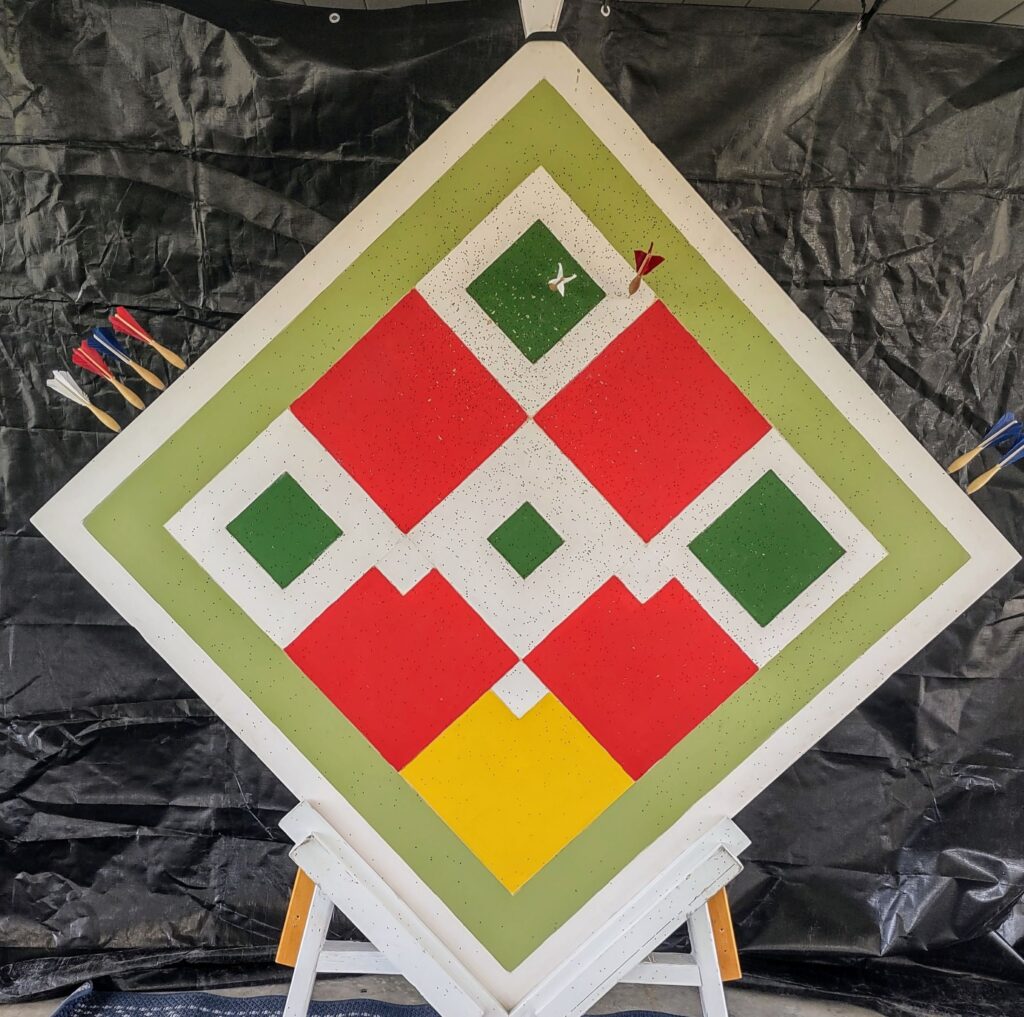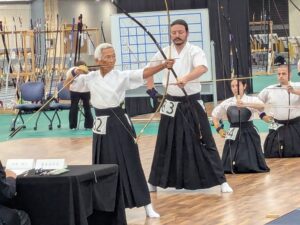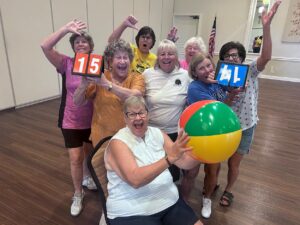The Dartball Club was formed in late 2023 and meets at 5 p.m. every Wednesday at the softball pavilion. We currently have about 20 active members.
The first dartball board was introduced by the Apex company in 1923. On March 31, 1941, Life magazine ran a story on dartball, stating that Philadelphia, Kansas City, and Milwaukee were strongholds of the sport.

What is dartball? Dartball is a game in which darts are thrown at a large wooden or homasote board that resembles a baseball field, with colored areas denoting bases. Dartball uses baseball-like rules and scoring.
Dartball rules and board configurations vary from league to league, with teams comprising either seven or nine players plus alternates.
Dartball teams are usually formed by churches, often playing their games during the fall and winter months in church basements or communal areas, and known as “church leagues.” There are also “city leagues” comprised of taverns and organizations, such as the Knights of Columbus, VFW, Moose, and Elks Clubs. Most leagues end their seasons with championship tournaments.
Dartball games can be competitive; just as in baseball, the opposing team and its supporters may attempt to distract the “batter.” In each match played, there are three individual nine-inning games.
The Dartball Club does not currently have set teams. We draw cards for teams each week to determine teams for the night.
The player throwing darts is the “batter.” Darts can be thrown overhand or underhand. Players throw darts toward the playing field from the pitcher’s line at a distance of 20 to 25 feet. Where the dart lands on the board determines the outcome of each pitch.
The batter continues to throw darts until they are safe or out. A batter is considered safe if their dart lands on first, second, or third base or by any combination of plays that put him safely “on base.” A run is scored when a player advances safely around first, second, and third base and returns safely to home plate.
A player may score by hitting a home run or by any combination of plays after he is “on base” (first, second, or third base) by subsequent batters getting either base hits or a home run that brings him home. A player who advances around all of the bases to score is credited with a run (R). While runs scored are considered an important batting statistic, runs batted in (RBIs) are regarded as higher.
Once the player has concluded their turn at bat, the next player on the team follows suit until the team makes three outs. Then, the other team has its turn up to bat.
The game concludes at the end of nine innings, with the team scoring the most runs winning the game.
For more information on dartball, see “Resident Clubs & Groups” on the OTOW App.




